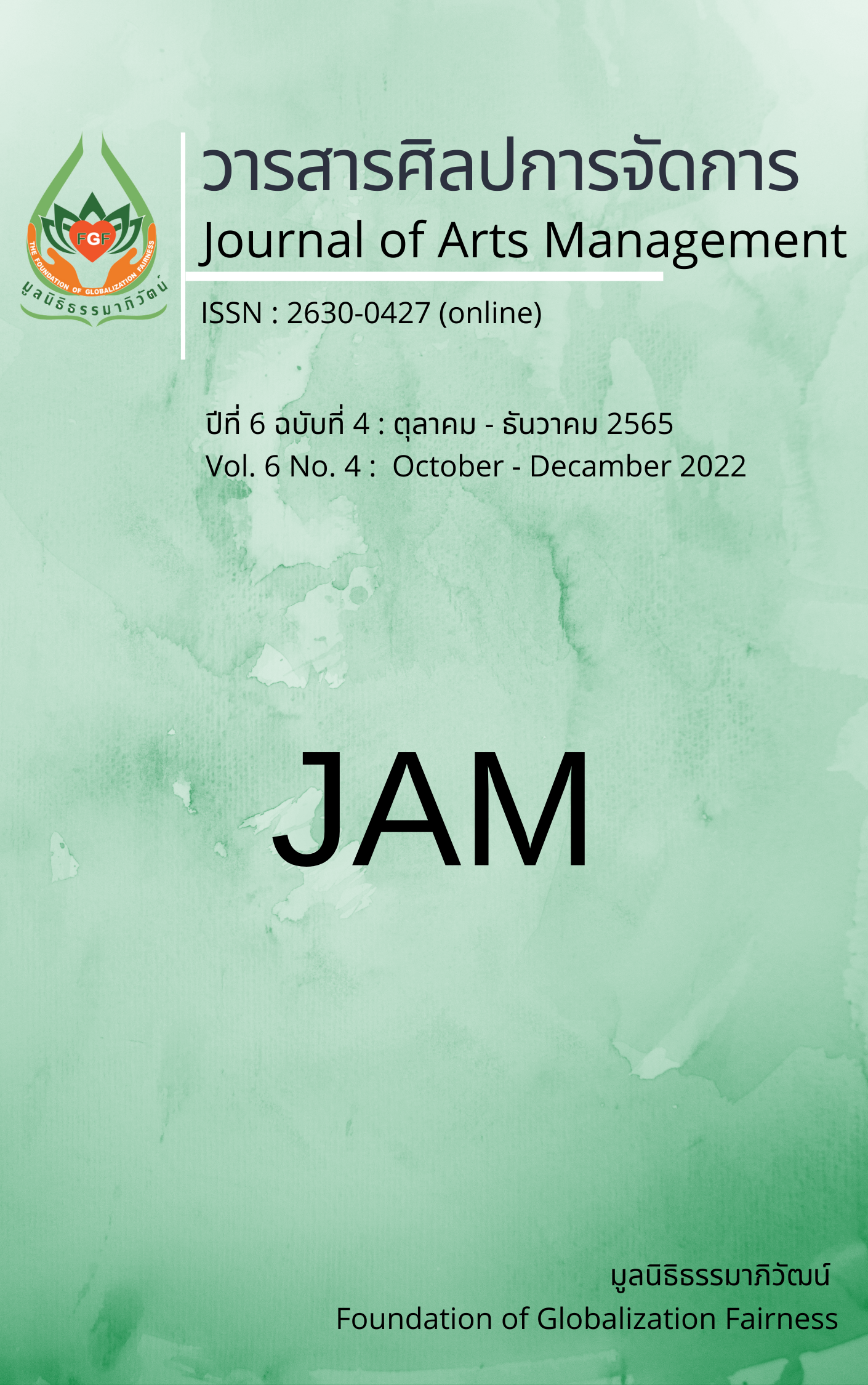The Educational Innovative Organization for Secondary Schools Which Awarded from Office of the Basic Education Quality Awards
Main Article Content
Abstract
This article aimed to (1) study the composition of educational innovation organizations of secondary schools that were awarded from the Office of the Basic Education Quality Awards; and (2) propose guidelines for developing secondary schools under the Office of the Basic Education Commission for educational innovation organizations. This research was mixed method research. For quantitative research, there were 13,931 school administrators and teachers from secondary schools who were awarded by the Office of the Basic Education Quality Awards in the central and eastern regions of Thailand. The sample consisted of 375 They were selected by multi-stage random sampling. Research instrument was the questionnaire scale estimates the 5 levels with reliability value 0f 0.94 and data were analyzed by using descriptive statistics and exploratory factor analysis. For qualitative research, the target group consisted of 5 eminent people from a purposive sample. The research instrument was a semi-structured interview and analyzed by content analysis. The research results were found as follows:
1) the components of the educational innovative organization of secondary schools which awarded from Office of the Basic Education Quality Awards consisted of 5 components, which were 1) innovative leadership and competency of personnel 2) vision, strategy and goals of being an innovative organization 3) a network for cooperation in education management 4) information and communication technology within educational institutions and 5) culture and innovative atmosphere of educational institutions.
2) guidelines for developing secondary schools under the Office of the Basic Education Commission for educational innovative organization found that administrators must keep up with the changes. Encourage personnel to have independent thinking. Involve teachers in defining the vision of the school. There is a network of cooperation in education management with all sectors. Management based on good governance. Build manpower to have the potential to use information and communication technology.
Article Details

This work is licensed under a Creative Commons Attribution-NonCommercial-NoDerivatives 4.0 International License.
Views and opinions appearing in articles in the Journal of Arts of Management It is the responsibility of the author of the article. and does not constitute the view and responsibility of the editorial team I agree that the article is copyright of the Arts and Management Journal.
References
Adair, J. E. (1996). Effective Innovation: How to Stay Ahead of The Competition. Pan Books.
Adams, R., Bessant, J., & Phelps, R. (2006). Innovation management measurement: A review. International Journal of Management Reviews, 8(1), 21-47. https://doi.org/10.1111/j.1468- 2370.2006.00119.x
Blumberg, A., & Greenfield, W. (1986). The Effective Principle: Perspectives on School Leadership (2nd ed.). Ally and Bacon.
Boonkua, A. (2019). A confirm factor analysis of innovative organization in basic education institutions: A case study in Thailand. Revista ESPACIOS, 40(44), 14.
Chamchoy, S. (2012). Concept of Innovation for School Management in the 21st Century. Journal of Education Naresuan University, 14(2), 117-128.
Chumwaengwapee, A. (2017). The Development of Model of Innovation Organization for Secondary Schools under the Office of Basic Education Commission[Doctoral dissertation, Burapha University].
Esteves, D. (2018). Colaborar para innovar: Contribuciones desde un caso portugués para rediseñar la noción de innovación educativa. (Collaborate to innovate: contributions from a Portuguese case study to redesign the notion of educational innovation). Revista Educación, 3(1), 7-30. file:///C:/Users/HP/Downloads/31406.pdf
Habing, B. (2020). Exploratory Factor Analysis. http://www.stat.sc.edu/habing/courses/530EFA.pdf
Junkrapor, M. (2019). Establishing an Innovative Organization to Drive towards the Organizational Excellence. Executive Journal, 39(1), 52-66.
Korhonen, T., Lavonen, J., Kukkonen, M., Sormunen, K., & Juuti, K. (2014). The Innovative School as an Environment for the Design of Educational Innovations. In Finnish Innovations and Technologies in Schools (pp. 99-113). https://doi.org/10.1007/978-94-6209-749-0_9
Laundy, P. (2006). An Innovation Discipline Model. http://www.bpminstitute.org/articles/article/article/aninnovation-discipline-model.html
Leithwood, K., & Jantzi, D. (2009). A Review of Empirical Evidence About School Size Effects: A Policy Perspective. Review of Educational Research, 79(1), 464-490. https://doi.org/10.3102/0034654308326158
McKeown, M. (2008). The Truth About Innovation. Prentice-Hall.
Ministry of Education. (2021). Results of Programmed for International Student Assessment: PISA 2018 Reading Mathematics and Sciences. The Institute for the Promotion of Teaching Science and Technology.
Maneenop, V. (2019). The Development Model toward Innovative School under the Office of the Basic Education Mission in Thailand. Test Engineering & Management, 81, 2554-2566.
Morakul, R. (2017). A Factor Analysis of Innovative Organization of School in the Basic Education. Veridian E-Journal, 10(2), 2341-2355.
Office of the Basic Education Commission. (2020). Action Plan 2020. Ministry of Education.
Office of the Permanent Secretary Ministry of Education. (2020). Strategic Plan of Technology for Education Development Fund 2020-2022. Office of the Permanent Secretary, Ministry of Education.
On-Ay, W. (2015). A Model for the Development of a Private School towards an Innovative Organization. Journal of Education Naresuan University, 17(2), 74-84.
Prajankett, O. (2014). An educational innovative organization: A new choice of educational administration. Journal of The Royal Thai Army Nurses, 15(1), 45-51.
Personnel Management Association of Thailand. (2019). Human Resources Professional Standards. http://www.pmat.or.th/main/index.php
Peters, T. J., & Waterman, R. H. (1982). The Art of Japanese Management: Applications for America's Best-Run Companies. Harper & Row.
PlunKett, W. R. (1994). Management (5th ed.). Wadsworth Publishing.
Rimkheeree, S. (2019). A Development of Indicators for Educational Innovative Organizations in Secondary Schools under the Office of Basic Education Commission[Doctoral dissertation, Burapha University].
Saengthanang, K. (2020). The Model of Development for Basic Education Schools to an Innovative Organization. Journal of Social Science and Buddhistic Anthropology, 5(7), 153-168.
Schermerhorn, J. R. (2005). Management (8th ed.). John Wiley & Sons.
Senge, P.M. (1994). The Fifth Discipline Fieldbook: Strategies and Tools for Building a Learning Organization. Currency.
Sittisomboon, M. (2009). The Development of Educational Innovation. Faculty of Education, Naresuan University.
Thepkraiwun, P. (2011). The Development of a Collaborative Network Model for Educational Quality Management in Small Sized Primary Schools[Doctoral dissertation, Khon Kaen University].


